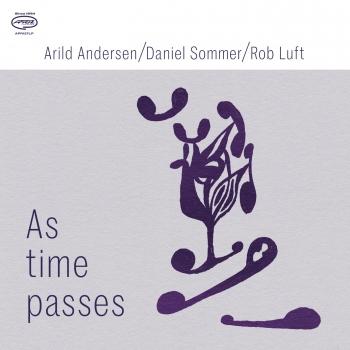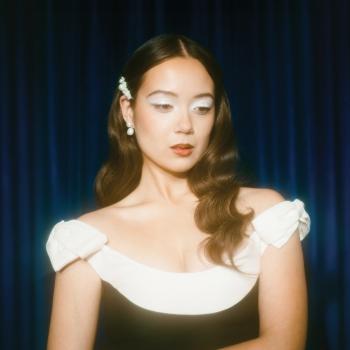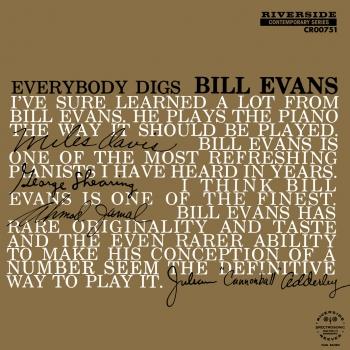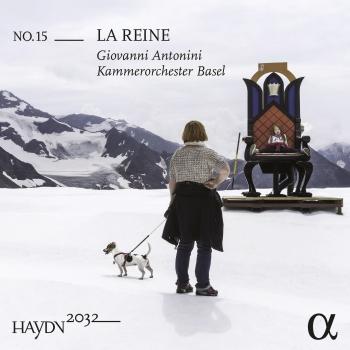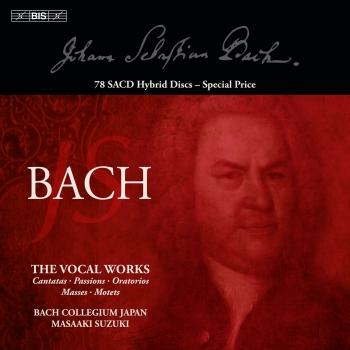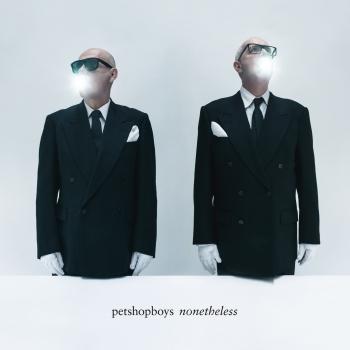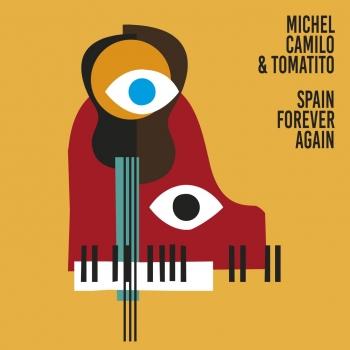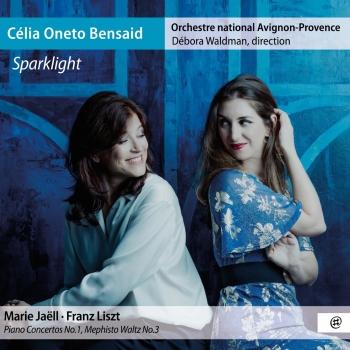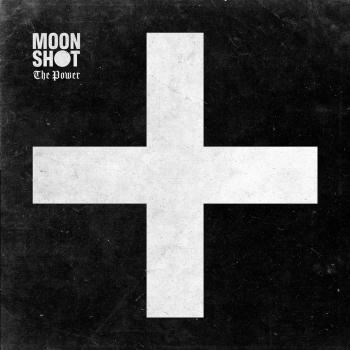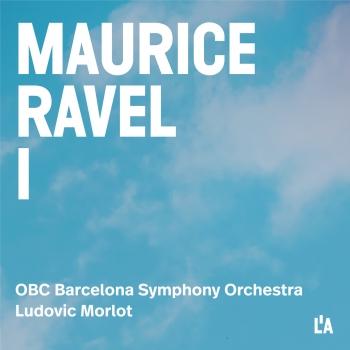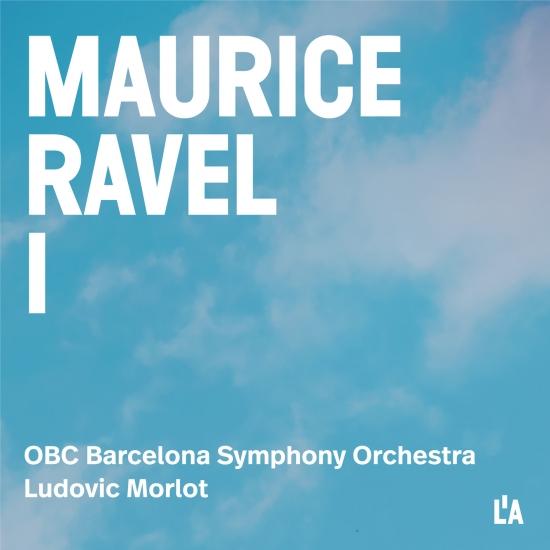
Maurice Ravel I: Complete Orchestral Works Orquestra Simfònica de Barcelona i Nacional de Catalunya & Ludovic Morlot
Album info
Album-Release:
2024
HRA-Release:
05.04.2024
Label: L'Auditori
Genre: Classical
Subgenre: Orchestral
Artist: Orquestra Simfònica de Barcelona i Nacional de Catalunya & Ludovic Morlot
Composer: Maurice Ravel (1875-1937)
Album including Album cover Booklet (PDF)
- Maurice Ravel (1875 - 1937): Le Tombeau de Couperin:
- 1Ravel: Le Tombeau de Couperin - Prélude03:41
- 2Ravel: Le Tombeau de Couperin - Fugue - Orchestrated by Kenneth Hesketh03:29
- 3Ravel: Le Tombeau de Couperin - Forlane05:51
- 4Ravel: Le Tombeau de Couperin - Rigaudon03:20
- 5Ravel: Le Tombeau de Couperin - Menuet04:47
- 6Ravel: Le Tombeau de Couperin - Toccata - Orchestrated by Kenneth Hesketh04:20
- Ma mère l'Oye:
- 7Ravel: Ma mère l'Oye - Prélude – Très lent03:01
- 8Ravel: Ma mère l'Oye - Premier tableau – Danse du rouet et scène02:24
- 9Ravel: Ma Mère l'Oye - Interlude I01:16
- 10Ravel: Ma mère l'Oye - Deuxième tableau – Pavane de la belle au bois dormant02:23
- 11Ravel: Ma Mère l'Oye - Interlude II00:56
- 12Ravel: Ma mère l'Oye - Troisième tableau – Les entretiens de la belle et de la bête04:03
- 13Ravel: Ma Mère l'Oye - Interlude III00:44
- 14Ravel: Ma mère l'Oye - Quatrième tableau – Petit Poucet03:05
- 15Ravel: Ma Mère l'Oye - Interlude IV01:35
- 16Ravel: Ma mère l'Oye - Cinquième tableau – Laideronnette, impératrice des Pagodes03:23
- 17Ravel: Ma mère l'Oye - Interlude V01:17
- 18Ravel: Ma mère l'Oye - Sixième tableau – Le jardin féerique03:19
- Pavane pour une infante défunte:
- 19Ravel: Pavane pour une infante défunte06:11
Info for Maurice Ravel I: Complete Orchestral Works
The Barcelona Symphony Orchestra (OBC) and Music Director Ludovic Morlot – renowned specialist in French repertoire with four Grammy awards – release the complete orchestral works of Maurice Ravel in six CDs between April 2024 and December 2026. The first volume of the collection, recorded at the Pau Casals Hall of L’Auditori with Mike George and Stephen Rinker – producer and sound engineer of the BBC and Chandos label – includes three iconic works by the composer from Ciboure (French Basque Country).
Ludovic Morlot’s precision and control of orchestral color give these recordings great transparency, with meticulously balanced sound and expressiveness that showcase the OBC’s poetic capacity. Additionally, the collection features the editorial revision of the complete orchestral works of the French composer: the Ravel Edition, a project that brings together artists such as Bertrand Chamayou, Renaud Capuçon, François-Xavier Roth, Ludovic Morlot, George Benjamin, Kirill Karabits, or Cristian Măcelaru, among others.
"Few 20th century composers have achieved such unanimous recognition as Maurice Ravel (1875-1937). As we approach the 150th anniversary of his birth, on 7 March 1875 in the village of Ziburu (French Basque Country), this is a propitious moment to revisit the importance of a body of work which, according to many musicologists, belongs to a truly independent musical spirit. Ravel was a contemporary of the movement sometimes referred to as “musical impressionism”, although its greatest representative, Claude Debussy (1862-1918), always rejected this label. The strength and independent spirit of Ravel’s work makes it no less unclassifiable. Despite this, at the turn of the century, the writer Romain Rolland (1866-1944), the future Nobel Prize winner for Literature in 1915, wrote: “I have found one who is more Debussian than Debussy: Ravel.”
In 2024, the Barcelona Symphony Orchestra will be delving deeply into Ravel’s orchestral universe. Under the baton of its music director, Ludovic Morlot (Lyon, 1973), it is undertaking major sound recordings of the complete orchestral works and other pieces with symphonic support, such as the song cycle Shéhérazade (Shahrzad, 1904), the ballet Daphnis et Chloé (Dafnis and Chloe, 1912) and the operas L’Heure espagnole (1911) and L’Enfant et les Sortilèges (The Child and the Spells, 1925).
The first instalment in the collection is the album that you have in your hands, which begins with Le Tombeau de Couperin (The Tomb of Couperin). This work makes formal reference to the musical form of the Baroque suite and the tombeau genre, which in the seventeenth and eighteenth centuries paid tribute to a person of importance or one esteemed by its composer. Le Tombeau de Couperin is dedicated to six friends of the composer, all of whom died in the First World War (1914-1917). Together, the six movements form a tribute to one of the greatest composers of the French Grand Siècle: François Couperin (1668-1733). It was premiered on 11 April 1919 by the Nîmes pianist Marguerite Long (1874-1966). In the same year Ravel decided to orchestrate “Prelude” (dedicated to the memory of Jacques Charlot), “Forlane” (dedicated to Gabriel Deluc, a Basque painter from Saint-Jean-de-Luz), “Rigaudon” (dedicated to Pierre and Pascal Gaudin) and “Menuet” (dedicated to Jean Dreyfus). This edition also includes orchestrations of the “Fugue” (in memory of Jean Cruppi), and the Toccata, by the composer Kenneth Hesketh (Liverpool, 1968). The “Toccata” was composed in memory of the captain and musicologist Joseph de Marliave (1873-1914), husband of the pianist who premiered the work.
In the years before composing Le Tombeau, Ravel had already demonstrated his talent and inventiveness with Ma mère l’Oye: Cinq pièces enfantines (Mother Goose: Five Children’s Pieces), one of many pieces inspired or influenced by a work of literature. Dedicated to the children Mimie and Jean, 6 and 7 years old, children of the Godebski marriage, friend of Ravel, the work leads us to mention a collection of stories by Charles Perrault (1628-1703) entitled Contes de ma mère l’Oye (The Tales of Mother Goose, 1697). Originally composed for piano for four hands between 1908 and 1910, the work was premiered on 20 April 1910 by the pianists Jeanne Leleu and Geneviève Durony at the inaugural concert of the Société Internationale de Musique. One year later, it was adapted for symphony orchestra and finally took the form of a ballet commissioned by the Director of the Théâtre des Arts, Jacques Rouché (1862-1957). It was at this theatre that the ballet version, choreographed by Jane Hugard, was premiered on 29 January 1912, and this version is the one that includes this album of the complete works of Maurice Ravel.
The well-known Pavane pour une infante défunte (Pavane for a Dead Princess, 1899), is an original work for piano that transports us back to Ravel’s years studying at the Paris Conservatoire with his teacher Gabriel Fauré (1845-1924). Orchestrated in 1910, the Pavane refers to a world of melancholy that strongly resonates with the aesthetic postulates of Hispanic musical nationalism. It was first performed on 5 April 1902 by the Catalan pianist Ricardo Viñes (1875-1943) and dedicated to Winnaretta Singer (1865-1943), the “Princesse de Polignac”. Although never as popular as works such as his Bolero, it is one of the French composer’s best-known pieces, despite its author’s own poor opinion of it, and the fact that it is considered to be influenced by authors such as his own master Fauré or, indeed, Emmanuel Chabrier (1841-1894), who died five years before it was composed." (Oriol Pérez Treviño)
Orquestra Simfònica de Barcelona i Nacional de Catalunya
Ludovic Morlot, conductor

Ludovic Morlot
took over as Music Director of the Barcelona Symphony Orchestra in September 2022.
Morlot’s élan, elegance and intensity on stage have endeared him to audiences and orchestras worldwide, from the Berlin Philharmonic to the Boston Symphony. During his 8 years as Music Director of the Seattle Symphony he pushed the boundaries of traditional concert programming, winning several Grammys. He is now Conductor Emeritus in Seattle, and in 2019 he was appointed Associate Artist of the BBC Philharmonic Orchestra with whom he has had a close relationship over many years; he returns to both orchestras every season. He was Artistic Director and a founding member of the National Youth Orchestra of China 2017-2021, conducting their inaugural concerts at Carnegie Hall and in China in 2017, and touring with them to Europe in 2019. From 2012-2014 he was Chief Conductor of La Monnaie, conducting new productions in Brussels and at the Aix Easter Festival – including La Clemenza di Tito, Jenufa and Pelléas et Mélisande.
Morlot has conducted the Berliner Philharmonic, Royal Concertgebouw, Czech Philharmonic, Dresden Staaksapelle, London Philharmonic and Budapest Festival orchestras, and many of the leading North American orchestras, notably the New York Philharmonic, Los Angeles Philharmonic, Chicago and Boston Symphony Orchestras. Morlot has a particularly strong connection with Boston, having been the Seiji Ozawa Fellowship Conductor at Tanglewood and subsequently appointed assistant conductor for the Boston Symphony. Since then he has conducted the orchestra in subscription concerts in Boston, at Tanglewood and on a tour to the west coast of America. He has also appeared extensively in Asia and Australasia, notably with the Seoul Philharmonic, Yomiuri Nippon Symphony and Melbourne Symphony Orchestras. Festival appearances have included the BBC Proms, Wien Modern, Edinburgh, and Aspen festivals.
His tenure in Seattle formed a hugely significant period in the musical journey of the orchestra. His innovative programming encompassed not only his choice of repertoire, but theatrical productions and performances outside the traditional concert hall space. There were numerous collaborations with musicians from different genres, commissions and world premieres. Some of these projects, including John Luther Adams’ Become Ocean, Aaron Jay Kernis’ Violin Concerto performed by James Ehnes and an exploration of Dutilleux’s music, have earned the orchestra five Grammy Awards, as well as the distinction of being named Gramophone’s 2018 Orchestra of the Year. Morlot has released 19 recordings with the Seattle Symphony Media label which was launched in 2014.
Morlot opened last season with a concertante performance of Die Walküre at Seattle Opera, invited back for Samson et Dalila in January 2023 and for a fully-staged Rheingold in August 2023. In recent months he has conducted the Philadelphia Orchestra, Los Angeles Philharmonic, San Francisco, Seattle, Utah and Sao Paulo symphonies. Guesting in Europe included the Netherlands Philharmonic, Copenhagen Philharmonic, BBC Philharmonic, Orchestre National de Lille, Bergen Philharmonic, City of Birmingham Symphony, Orquesta Castilla y Leon and of course Barcelona Symphony. He has a strong commitment to supporting emerging talent and regularly conducts students at the Colburn Conservatory. In 2021 he sat on the jury of the Leeds International Piano Competition and conducted students at the Royal Academy (London), New England Conservatory (Boston) and made his annual visit to the Aspen Festival.
Having trained as a violinist, he studied conducting at the Pierre Monteux School (USA) with Charles Bruck and Michael Jinbo. He continued his education in London at the Royal Academy and then at the Royal College as recipient of the Norman del Mar Conducting Fellowship. Ludovic is Affiliate Professor at the University of Washington School of Music in Seattle and a Visiting Artist at the Colburn School in Los Angeles. He was elected a Fellow of the Royal Academy of Music in 2014 in recognition of his significant contribution to music.


